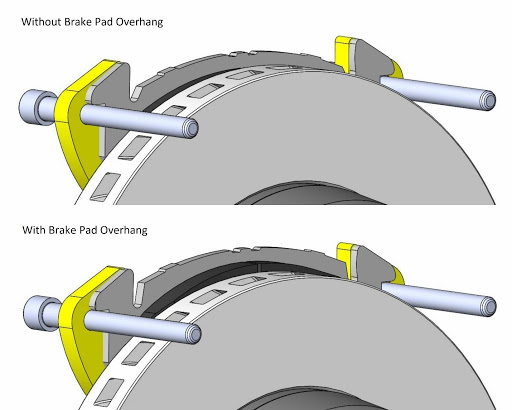
You finally did it! You upgraded your ride to power brakes, and everything is running smoothly and efficiently… sort of. You can’t help but notice that the brake pads don’t quite fit with the calipers. It looks a little odd, but how big of a problem is it? Should you be concerned about brake pad overhang?
So many classic car enthusiasts have reached out to us wondering about brake pad overhang. If you’re concerned too, we provide all the answers you need right here.
You might also like: Selecting the Best Brake Pads for your Classic Car
What is Brake Pad Overhang?
Many of our disc brake brake conversion kits use a caliper from General Motors manufactured originally in the late 1960s and used all the way up into the 1990’s. This caliper, commonly known as the GM D52 caliper, is a great caliper but over time the pad manufacturers have made small changes to the friction area that causes the top of the brake pad to not align as anticipated with the top of the brake rotor. The rotor and pad are typically inline with one another and this causes an usual looking scenario when the top of the pad overhangs past the top of the rotor.
The caliper as related to the location on the brake rotor is exactly located to what was originally designed by GM many years ago.
Check this out: New Caliper Mounting Bracket System
Diagnosing Brake Pad Overhang
In the image below, you can see a side-by-side comparison of brake pads without overhang versus brake pads with overhang.

Will Brake Pad Overhang Damage my Vehicle?
In short, no. Overhang does not pose any problems to the function of your brakes, but it certainly looks strange and can give the false impression that something isn’t right.
Rest assured, your brakes will continue to function properly and there will be no additional wear and tear to your pads.
